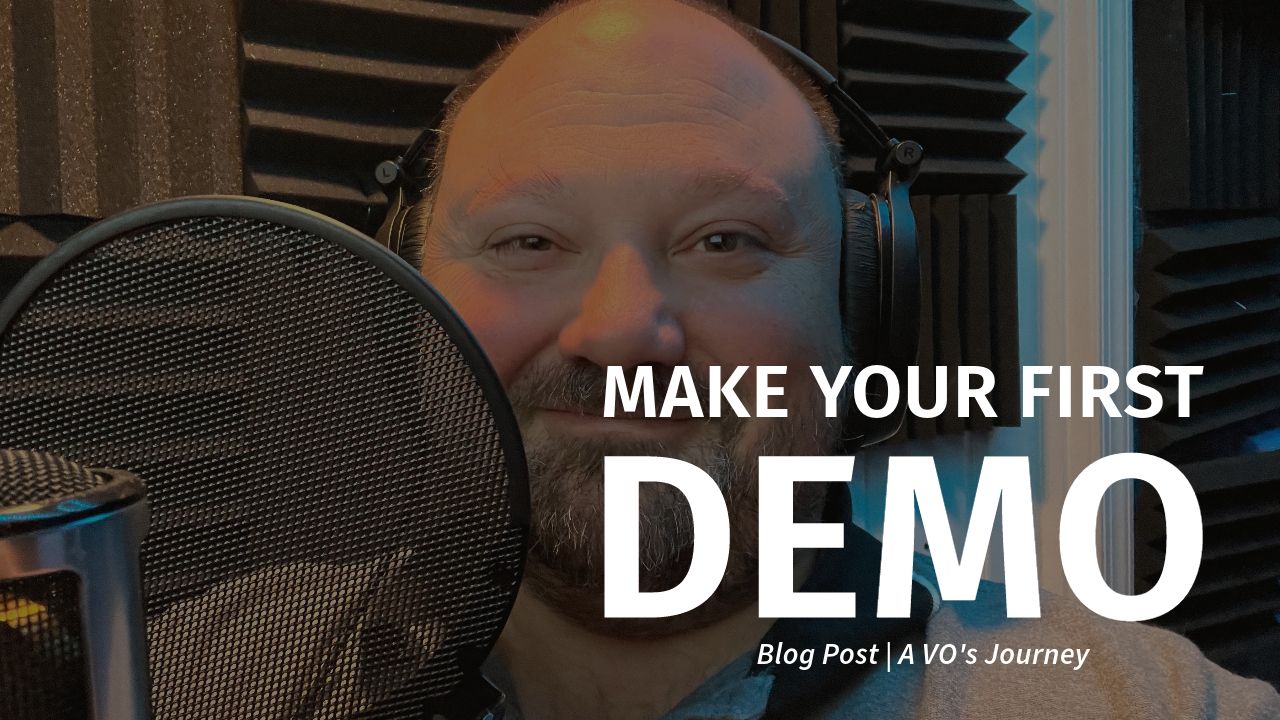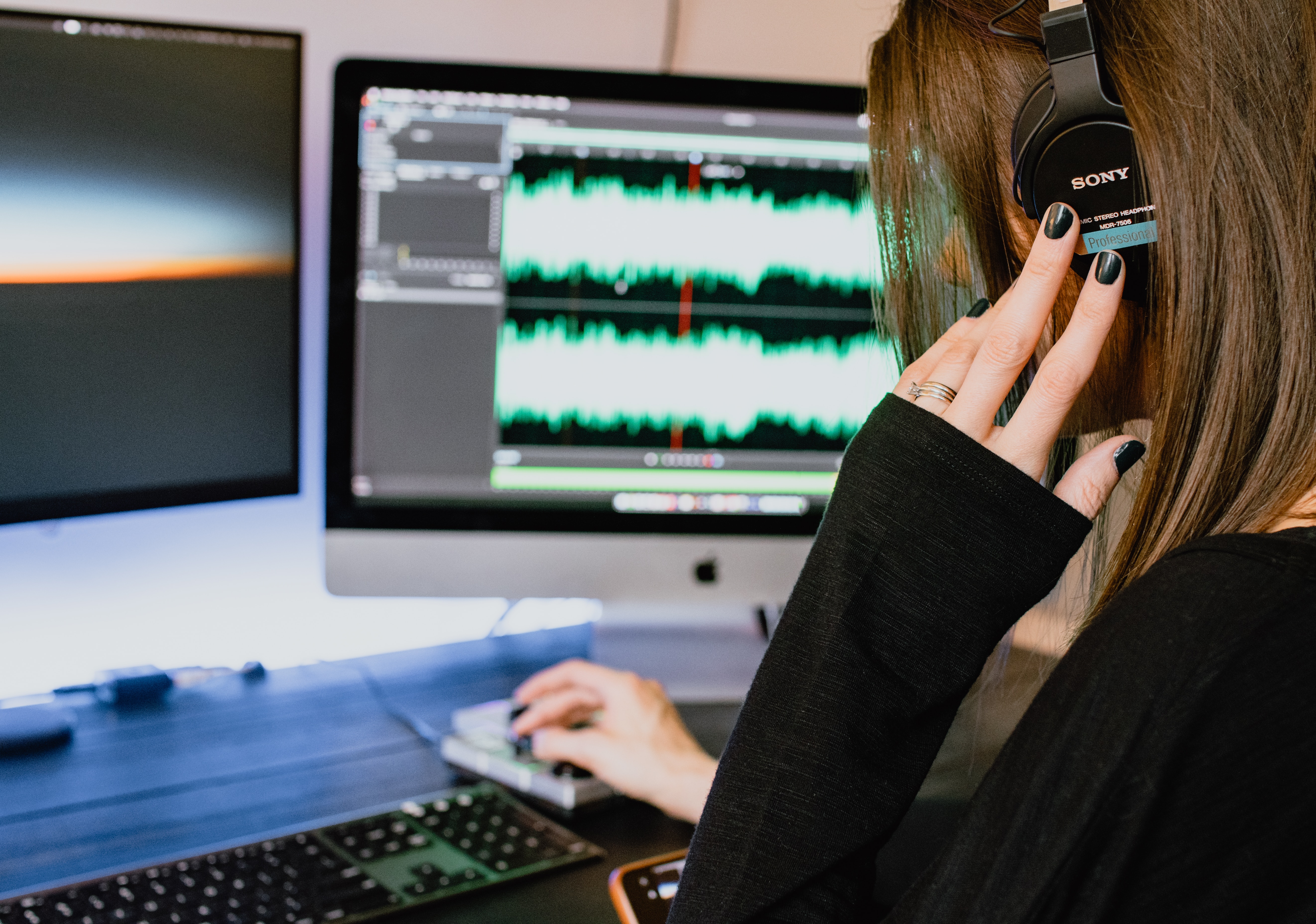How To Make Your First-Ever Voiceover Demo
Nov 03, 2023
How To Make Your First-Ever Voiceover Demo
And land your next gig!
Ah, the voiceover demo—a portfolio and business card rolled into one for the aspiring voice actor. This compact audio file is much like a sizzle reel that film directors use to impress studios or a digital portfolio that graphic designers flaunt to potential clients. In a competitive world of voice acting, your demo is the key that opens locked doors and beckons opportunity to come knocking.
The voiceover demo is more than just a series of vocal recordings. It’s a declaration of your talent, range, and, most importantly, marketability. Without a polished demo, even the most gifted voice actors could find themselves lost in the sea of obscurity. It is, in essence, your vocal resume—your chance to show potential clients what you say and how you say it.
You’ve found your way here to a comprehensive guide designed to walk you through “how to make a voiceover demo.” From the significance of voiceover demo scripts to the ins and outs of the voiceover industry, consider this your handbook to construct a demo that truly speaks volumes.

The Nuts And Bolts Of A Voiceover Demo: Your Vocal Blueprint
A voiceover demo is more than just a random collection of spoken lines; It is the assembled echo of your talent, skill, and range in a neat, consumable package. When someone listens to your demo, they want to answer questions: Can this voice capture my audience? Does it adapt to different moods and tones? Is it the voice I’ve been searching for?
If you want to establish a successful career in the industry, your voiceover demo is far from optional; it’s essential. It’s the foot in the door, the first impression you’ll make on casting directors, agents, and clients. Your demo acts as a multipurpose tool: It can serve as your audition for specific roles, your introduction to new clients, and a portfolio showcasing your past work. When clients sift through a digital pile of voiceover demos, yours needs to stand out, not just in quality but in its versatility and uniqueness.
Laying The Foundation With Voiceover Demo Scripts
“Content is king,” they say, and this holds especially true for your voiceover demo. A robust script forms the backbone of any excellent voiceover demo. It’s the words you utter that give life to your vocal abilities. Without the proper script, even the most charming voice can fall flat.
Selecting the correct script isn’t about picking the first set of lines that resonate with you; it’s about strategically showcasing your vocal range, dynamic abilities, and genre versatility. A commercial script, for instance, is perfect for demonstrating your ability to sell a product, while a narrative script might display your storytelling skill.
When it comes to scripts, variety is your ally. Incorporate scripts that let you flex your dramatic chops, showcase your knack for comedy, or prove that you can talk tech without sounding like a manual. Your aim should be to cover as much ground as possible without sacrificing quality. A single genre can’t encapsulate your skills; your demo should echo the entire orchestra of your vocal capabilities.
Decoding The Voiceover Demo Types: Your Personalized Playlist
One size doesn’t fit all; the same logic applies to voiceover demos. Consider the demands of commercials, audiobooks, video games, and documentaries. Each realm requires a specialized set of vocal skills. But fret not, for this is where specialized voiceover demos come into play. These can be likened to playlists—each “track” tailored to woo a specific audience.
Three major types of voiceover demos grace the industry: commercial, narration, and character demos. Each demo type has its playground; where it goes to be heard. Knowing which demos to prepare and including snippets of each in your general demo can broaden your reach and increase your chances of catching the right ears.
Commercial Demo
A commercial demo usually highlights your capacity to persuade and inform, capturing what makes your voice suitable for sales, promotions, or announcements. Commercial demos usually find their home in advertising agencies and radio stations.
Narrative Demo
Narration demos might be your entry ticket into the world of documentaries, educational content, and audiobooks. They emphasize your storytelling abilities and how effectively you can maintain the audience’s attention over extended periods. Narration demos are the gems sought after by producers of documentaries and audiobooks.
Character Demos
Character demos are your proving ground for animation, video games, and other roles requiring unique or varied voices. These demos let your creativity run wild, allowing you to demonstrate your skill in bringing various personas to life. Character demos make their way into animation studios and gaming companies, where a versatile voice can breathe life into pixels and sketches.
The Gear To Make Your Voice Soar
Before recording a single syllable, you’ll need to get your hands on the right equipment. Think of this as assembling your toolkit. To hammer a nail, you wouldn’t use a wrench; similarly, your choice of gear should align with your voiceover ambitions.
Microphones
The cornerstone of your setup will be your microphone. Dynamic microphones are generally more robust and can handle high-pressure sound levels, but they may not capture your voice's full detail and nuance. Condenser microphones, on the other hand, offer a higher frequency response and louder output but are more sensitive to loud sounds.
Recording Software
In the digital age, voicing software serves as your virtual recording studio. Programs like Audacity offer an accessible but comprehensive solution for voiceover recording and editing, while more advanced software like Adobe Audition provides a plethora of sophisticated features fit for a pro.
Soundproofing
In a bustling world, even minor background noises can affect the quality of your voiceover demo. Simple solutions like hanging heavy curtains or laying down carpets can reduce echo and external noise. A portable isolation shield for your microphone can also be a game-changer, enabling you to capture cleaner, crisper sound. A controlled environment lets your voice skills shine, free from distracting ambient noise.
Perfecting the Voiceover Script
A script for a voiceover demo is more than just words on a page; it’s the secret sauce that flavors your vocal performance. Like any memorable dish, your script shouldn’t just satisfy—it should intrigue, leaving a lingering aftertaste that calls one back for more. Go beyond clichés. Experiment with varying sentence lengths, employ rhetorical devices smartly and add splashes of humor or drama where fitting.
Your script is also the place to infuse your unique voice, not just in terms of sound but in personality and style. The casting directors and potential clients want to hear ‘you,’ so offer them a taste of what makes your voice uniquely captivating.
How Long Should Voice Demos Be?
The most engaging conversation can become tedious if it drags on too long, and voiceover demos are no exception. Length matters, and less is often more in the voiceover demos world. The industry standard hovers around 60 to 90 seconds. Remember, casting directors and clients often have to sift through dozens if not hundreds of demos. Yours should stand out for its quality, not its ability to put someone to sleep.
However, length isn’t just about keeping things short; it’s about balancing brevity and showcasing your abilities. Your demo should be long enough to display your versatility but short enough to retain interest. A well-edited 60-second demo can be far more impactful than a rambling two-minute excerpt.
The bottom line? , knowing “how long should voice demos be” becomes a strategic decision that impacts how your skills are perceived. A demo that overstays its welcome could be seen as a lack of editing skills or a misunderstanding of industry standards. On the flip side, one that’s too short may fail to fully encapsulate your range and potential.
Your Demo’s Big Debut
Creating your voiceover or voice-acting demo is hardly a one-and-done affair. Revision is your trusted ally in the quest for auditory perfection. Start by reviewing the demo yourself. Listen for inconsistencies, mispronunciations, or missed opportunities for inflection. Your ears will catch mistakes your eyes might miss in the script.
While the above process is crucial, it shouldn’t stop with self-review. External feedback is like a mirror, revealing angles you can’t see yourself. Engage trusted colleagues or mentors to listen to your demo, asking them for brutal honesty.
Once you’ve crafted your masterpiece, it’s showtime. Distributing your voiceover demo is an art in itself. You have a plethora of channels at your disposal, ranging from social media platforms specialized for voice actors to casting websites. Tailor your approach depending on the audience. If reaching out directly to potential clients, ensure your email or message is as polished as your demo. A generic, spray-and-pray approach won’t cut it.
Remember, the objective is not just to get heard but to get hired. So, target wisely, approach respectfully, and follow up diligently. Your demo is your vocal resume, and just like any job application, it’s not merely about submission but about making a connection.

From Demo To Standing Ovation
So you’ve navigated the labyrinthine path of “how to make a voiceover demo.” It’s no small feat, and your masterpiece is the sum of careful planning, keen execution, and rigorous review. But remember, Standing still is like moving backward in the ever-changing world of voice acting; Continual refinement is the name of the game.
From revisiting your script choices to upgrading your gear, every tweak enhances your demo, making it more compelling for the next set of ears. The work doesn’t end once your demo is out in the world. Keep tabs on industry trends, seek feedback, and, most importantly, stay vigilant for opportunities. Every audition you don’t take is a role you won’t get. Your voiceover demo is your foot in the door, but your ongoing efforts will help you cross the threshold into a rewarding career.
Additional Resources: Your Toolbox For Voiceover Victory
Creating a voiceover demo doesn’t mean you have to go it alone. While your unique voice is your greatest asset, the right tools and information can be indispensable allies.
Here are some suggested resources to accompany you on your path:
Reading Material: Books like “Voiceover Voice Actor” by Tara Platt and Yuri Lowenthal along with articles on A VO’s Journey offer essential insights for aspiring voice artists.
Online Courses: Websites like Udemy, Skillshare, and A VO’s Journey provide specialized courses in voice acting and editing techniques. Industry professionals often teach these lessons and offer real-world applications.
Recording Gear: If you’re in the market for new equipment, websites like Sweetwater and B&H offer a wide range of professional-grade microphones and other recording gear, often complete with user reviews to guide your selection.
Editing Software: Don’t underestimate the importance of quality editing software. Programs like Adobe Audition or Audacity offer features ranging from noise removal to multi-track editing, which is vital for fine-tuning your demo.
Voiceover Forums: Platforms like Reddit’s r/VoiceActing, Voice Acting Club, and Academy Voices are excellent places to connect with peers, exchange tips, and even discover job postings.
Use these resources to augment your skills, polish your demos, and make meaningful connections in the industry. After all, a well-equipped voice actor is a successful voice actor.
Your voiceover demo is just the start of your journey to become a voiceover professional. If you're looking to refine your craft and master the industry's nuances, A VO’s Journey has the tools and resources to guide you to find your voice and share it with the world.






